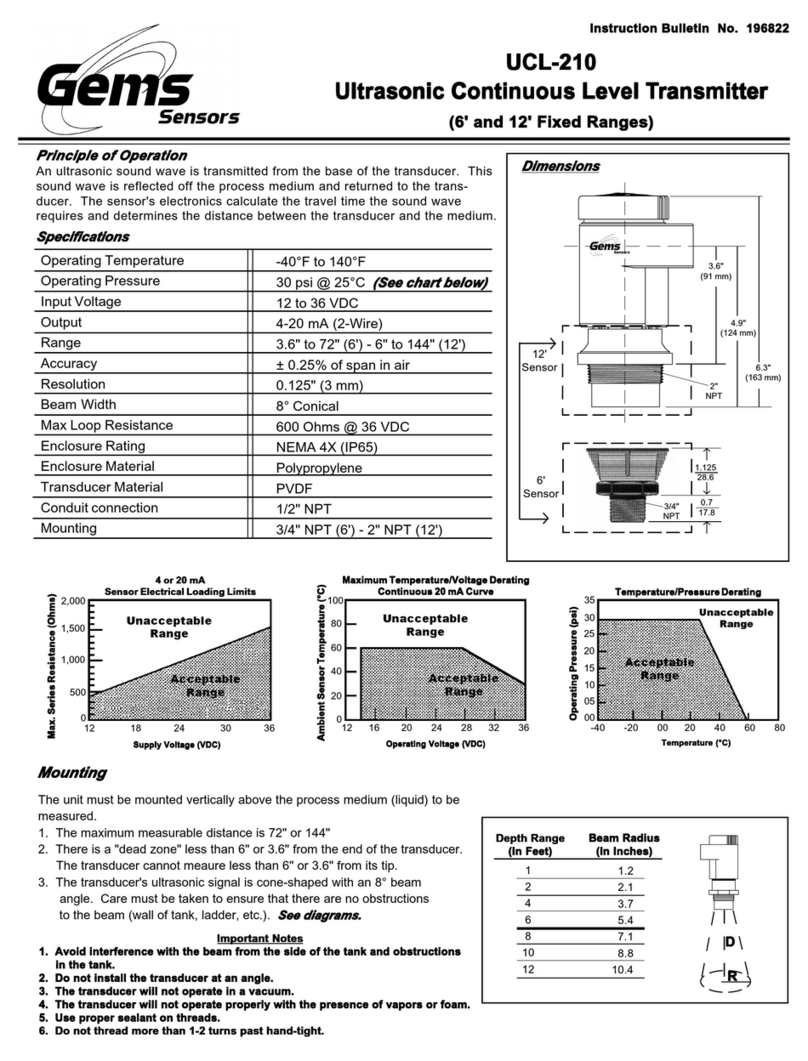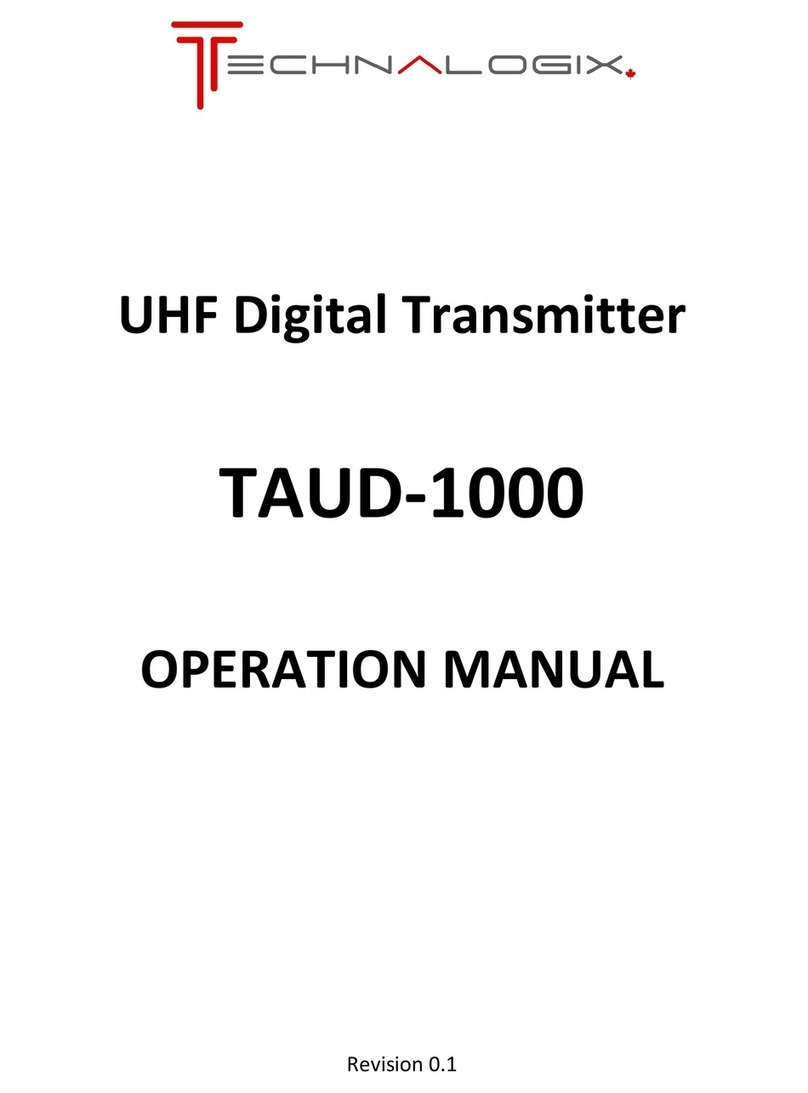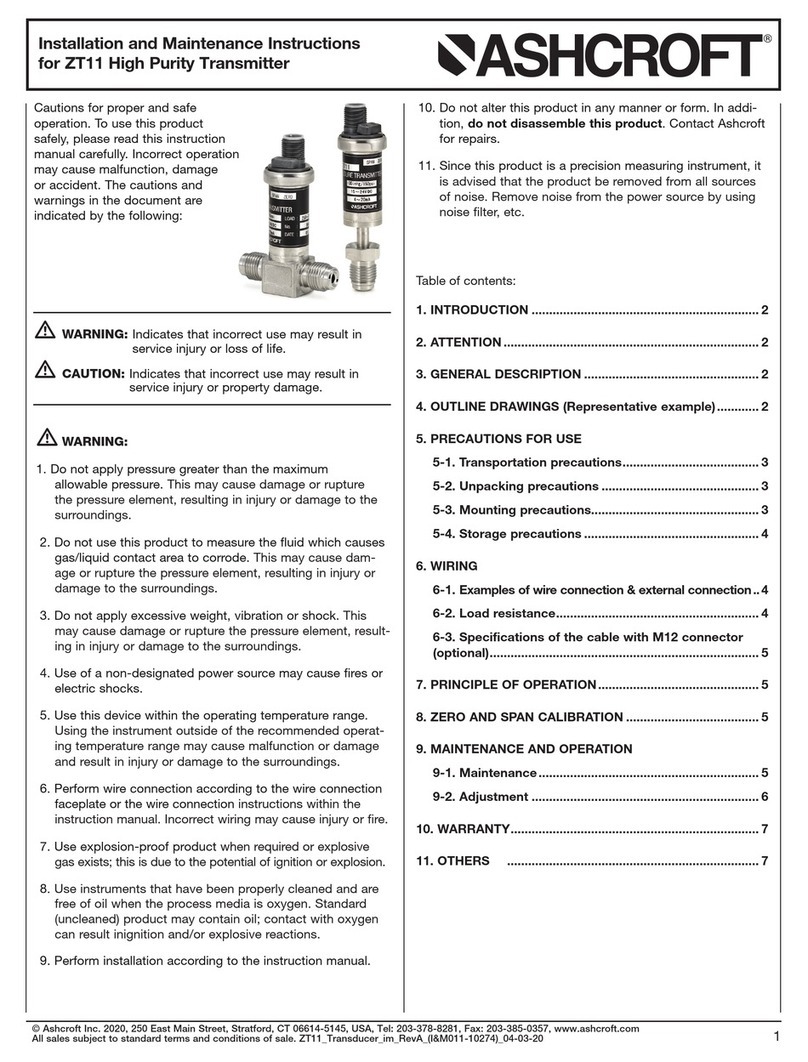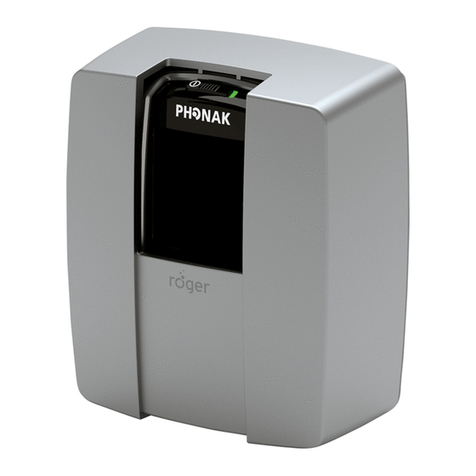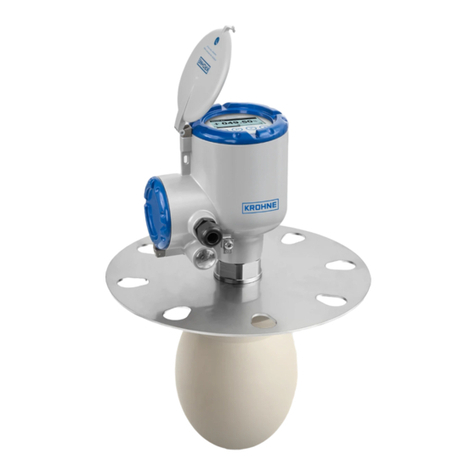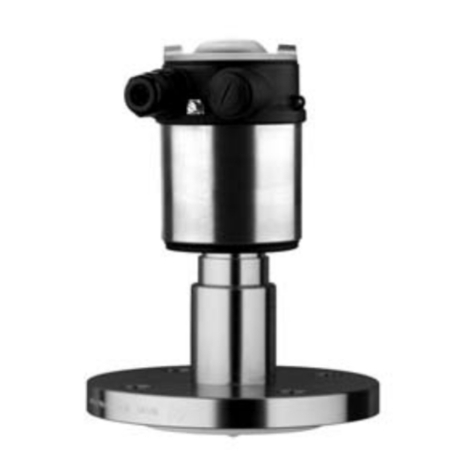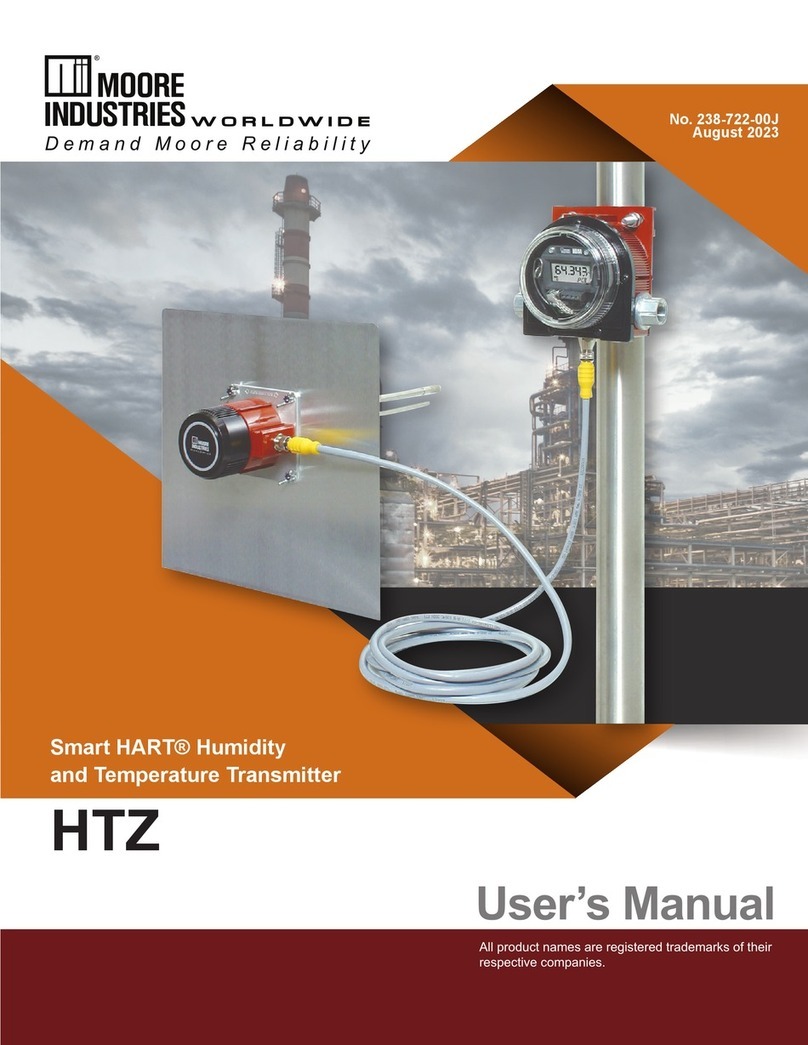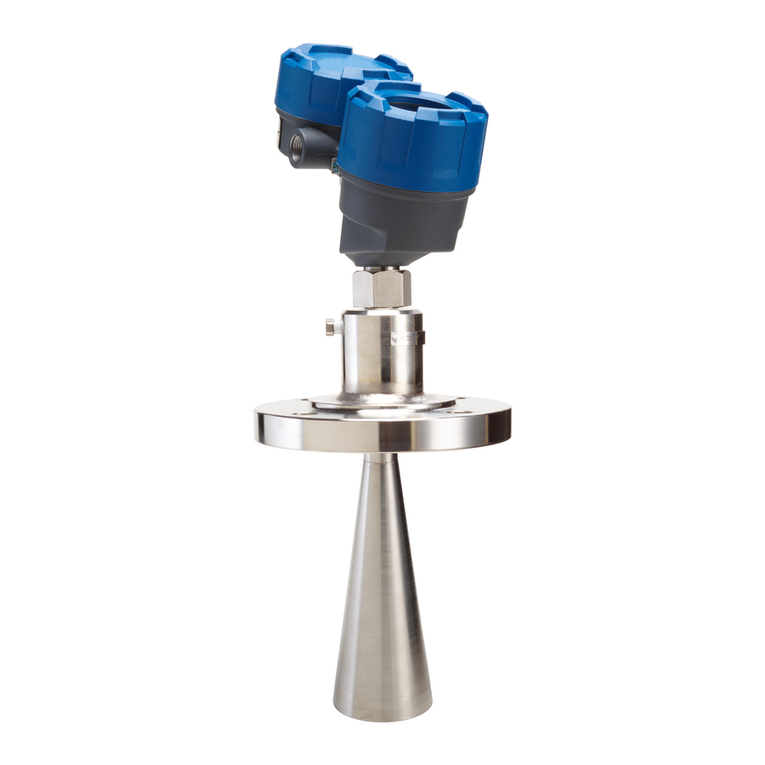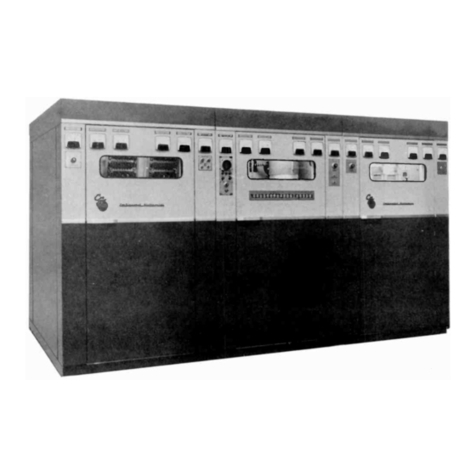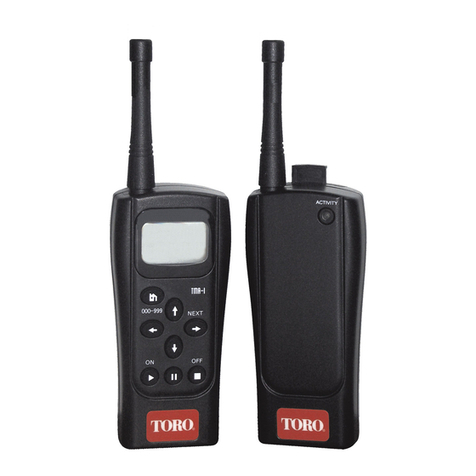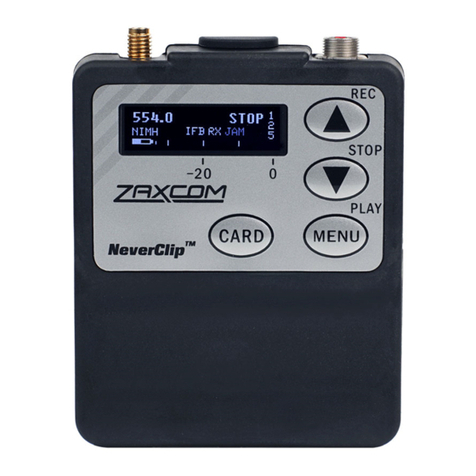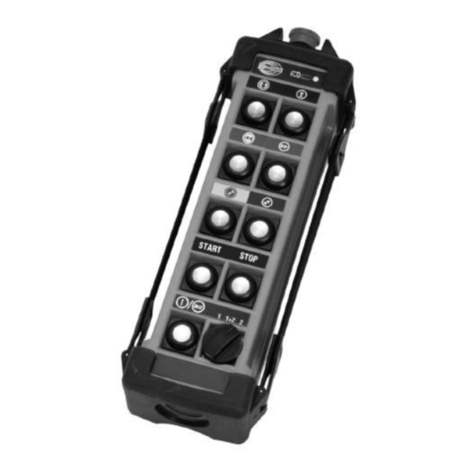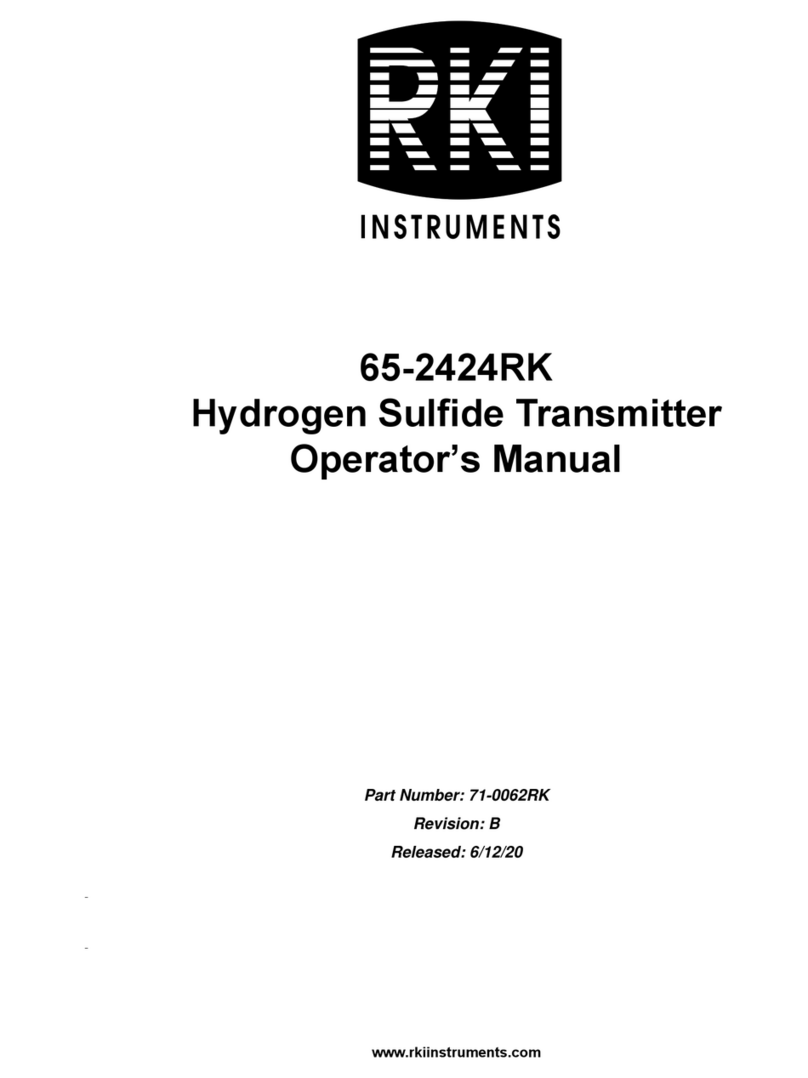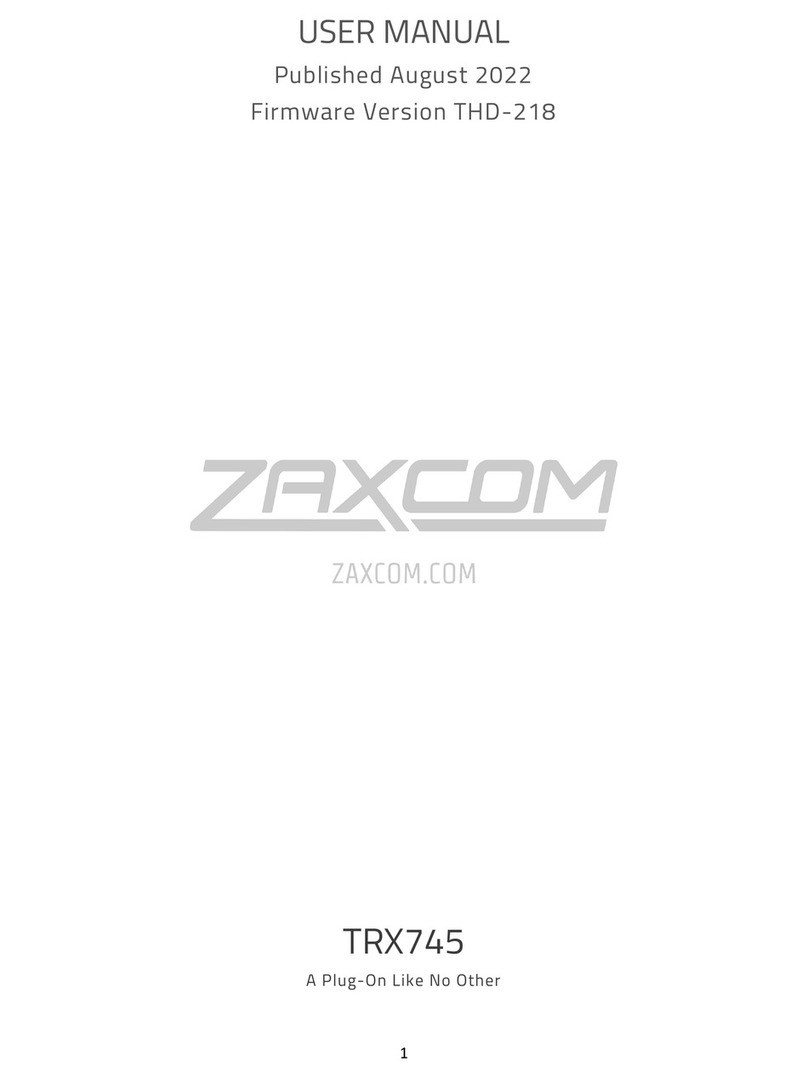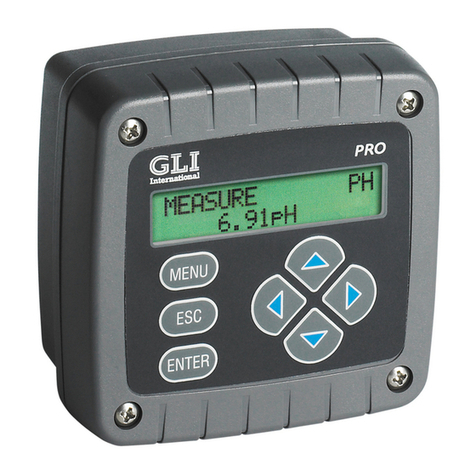Gems Sensors UCL-200 User manual

Principle of Operation
An ultrasonic sound wave is transmitted from the base of the transducer. This sound wave is reflected off the
process medium and returned to the transducer. The sensor's electronics calculate the travel time the sound wave
requires and determines the distance between the transducer and the medium.
UCL-200
Ultrasonic Continuous Level Transmitter
Instruction Bulletin No. 197458
Rev. A
3.6"
(91 mm)
4.9"
(124 mm)
6.3"
(163 mm)
2"
NPT
Dimensions
Important Notes
1. Avoid interference with the beam from the side of the tank and obstructions
in the tank.
2. Do not install the transducer at an angle.
3. The transducer will not operate in a vacuum.
4. The transducer will not operate properly with the presence of vapors or foam.
5. Do not thread more than 1-2 turns past hand-tight.
The unit must be mounted vertically above the process medium (liquid) to be
measured.
1. The maximum measurable distance is 294" (24.5 Ft.)
2. There is a "dead zone" less than 6" from the end of the transducer.
The transducer cannot meaure less than 6" from its tip. This dead
zone can also be set to a distance greater than 6".
3. The transducer's ultrasonic signal is cone-shaped with an 8° beam
angle. Care must be taken to ensure that there are no obstructions
to the beam (wall of tank, ladder, etc.). See diagrams.
Mounting
12 16 20 24 28 32 36 -40 -20 00 20 40 60 80
-40°F to 140°F
30 psi @ 25°C (See chart below)
14 to 36 VDC
4-20 mA (3-Wire sourcing)
6" to 294"
± 0.25% of span in air
0.125" (3 mm)
8° Conical
NEMA 4X (IP65)
Polypropylene
PVDF
1/2" NPT
2" NPT
SPDT, 250 VAC, 10 A, 1/2 Hp
Operating Temperature
Operating Pressure
Input Voltage
Output
Range
Accuracy
Resolution
Beam Width
Enclosure Rating
Enclosure Material
Transducer Material
Conduit connection
Mounting
Relay
Specifications
Acceptable
Range
12 18 24 30 36
Unacceptable
Range
Max. Series Resistance (Ohms)
4 or 20 mA
Sensor Electrical Loading Limits
2,000
1,000
500
1,500
0
Supply Voltage (VDC)
MaximumTemperature/VoltageDerating
Continuous 20 mA Curve
Acceptable
Range
100
60
40
80
0
Operating Voltage (VDC)
20
Unacceptable
Range
Ambient Sensor Temperature (°C)
Unacceptable
Range
Temperature/PressureDerating
Acceptable
Range
35
30
25
20
15
10
05
00
Operating Pressure (psi)
Temperature (°C)
Depth Range
(In Feet) Beam Radius
(In Inches)
1
2
4
6
8
10
12
14
16
18
20
22
24
1.2
2.1
3.7
5.4
7.1
8.8
10.4
12.1
13.8
15.5
17.2
18.8
20.5
R
D
To return to factory settings, remove power to the transducer for at least 10 seconds, then reapply power while
pressing the "Set" and "Menu" buttons.
To change the unit of measurement from inches to centimeters, remove power to the transmitter for at least 10
seconds, then reapply power while simultaneously pressing the "s" and "Set" buttons.
Gems Sensors Inc.
One Cowles Road
Plainville, CT 06062-1198
Toll-Free: 1-800-378-1600
Return Policy
Returns are accepted on stock items up to 30 days from date of order. You must contact our Returns Department for a
Return Authorization (RA) number. Return the goods - freight prepaid - in the original container and include original
packing slip. C. O. D. returns are not accepted. Gems reserves the right to apply restocking charges.
Tel: 860-793-4357
Fax: 860-793-4563
Precautions are taken to ensure safe arrival of all shipments. Should you receive goods damaged in transport, you must file a claim with
the carrier within 90 days or the claim is waived. Gems Sensors Inc. shall not be liable for any damage in case of late delivery or lost
shipments.
Warranty
Gems Sensors Inc., the seller, warrants its products to be free from defects in material and workmanship in normal use and service for a
period of one year from date of shipment. Gems reserves the right and option to refund the purchase price in lieu of repair or replacement
upon evaluation of the returned original part. Modification, misuse, attempted repair by others, improper installation or operation shall
render this guarantee null and void. Gems Sensors Inc. makes no warranty of merchantability or fitness for a part or purpose.
Limits of Liability
In no circumstances shall Gems Sensors Inc. be liable for special, consequential or exemplary damages of any kind or character, including
contract, tort, and strict liability in tort and contract.
Equipment sold by Gems Sensors Inc. not intended for use in a nuclear installation, nor shall it be used as a “Basic Component” as same
as defined under Part 21, Title 10 of the Code of Federal Regulations. In the event of such use, you agree to indemnify and hold us
harmless from any and all subsequent liabilities and responsibilities which might arise in connection with such use.
• Gems products must be maintained and installed in strict accor-
dance with the National Electrical Code and the applicable Gems
product instruction Bulletin that covers installation, operation and
proper maintenance. Failure to observe this information may result
in serious injury or damages.
•The supply voltage to the sensor should not exceed 36 VDC, Max.
• Please adhere to the pressure and temperature limitations shown
throughout this catalog for our level and flow sensors. These
limitations must not be exceeded. These pressures and tempera-
tures take into consideration possible system surge pressures/
temperatures and their frequencies.
•Selection of materials for compatibility with the media is critical to
the life and operation of Gems products. Take care in the proper
selection of materials of construction, testing is required.
•Avoid overtightening when mounting
•Life expectancy of switch contacts varies with application. Contact
Gems if life cycle testing is required.
•Ambient temperature changes do affect switch set points, since the
gravity of a liquid can vary with temperature.
•Our sensors have been designed to resist shock and vibration.
However, shock and vibration should be minimized.
•Electrical entries and mounting points in an enclosed tank may
require liquid/vapor sealing.
•Our sensors must not be field-repaired.
•Physical damage sustained by product may render it unserviceable.
Important Points:
EC4 288"
EC20 8"
SAF1/2/3 Saf1
Fast/Slow Fast
Factory Settings
HSET 5"
LSET 288"
RLAY N/A
TANK 288"
ALIN Off

Wiring
Gems Sensors UCL-200
Ultrasonic
Level Transmitter
RELAY
SET
MENU
PVC-Jacketed, Shielded, 20 AWG
9" Cable (228mm)
(+) Red
(-) Black
Signal White
COM blue
NC Green
NO Yellow
4-20mA
Relay
Only the EC4 and EC20 values need to be set for operation. Setting the MAXR and MINR values is highly
recommended for more accurate operation. The ALIN mode is only used to determine signal strength, which
may be needed when mounting or for troubleshooting the transmitter. RLAY, HSET, and LSET are used to
program the relay operation. Holding the "MENU" key will scroll through the modes in following order: LEVEL,
EC4, EC20, RLAY, HSET, LSET, SAF 1/2/3, FAST/SL, ALIN, OFF/O TANK.
A. Setting EC4 Value (This is the 4 mA setting which equates to the lowest measure point in the tank)
1. Hold “MENU” key until “EC4” appears in the display and then release
2. Wait until a value appears which will be the current measured level
3. Press the up or down arrow keys once to display the current EC4 value
4. Press the up or down arrow keys to change the EC4 value to your desired setting (the longer you hold
these buttons, the faster the value will change). 216" is the maximum measurable value.
5. Press “SET” key to lock in this value
6. The display will show “ENTER” to indicate the value is set and then “LEVEL” as it returns to measuring
the level.
B. Setting the EC20 Value (This is the 20 mA setting which will be the highest measure point in the
tank)
1. Hold “MENU” key until “EC20” appears in the display and then release
2. Wait until a value appears which will be the current measured level
3. Press the up or down arrow keys once to display the current EC20 value
4. Press the up or down arrow keys to change the EC20 value to your desired setting (6" is the absolute
min. value, but 8" is the recommended min.)
5. Press “SET” key to lock in this value
C. Setting the Fail-Safe Mode (default setting is SAF1)
SAF1 = The output will go to 22 mA if the ultrasonic signal is lost
SAF2 = The output will go to 4 mA if the signal is lost
SAF3 = The output will hold the current (last measured value) if the signal is lost
1. Hold the “MENU” key until “SAFI”, SAF2" or “SAF3” appears in the display
2. Release the “MENU” key and hold the “SET” key to toggle from SAFI to SAF2 to SAF3
3. When the desired mode is reached, release the “SET” key to lock in that setting
Programming
←→
D. Setting the FAST/SLOW Mode (default is FAST)
This determines the averaging rate at which the signal is processed. The FAST mode is typical and will have
2 signals per second and update once a second. The SLOW mode is generally used in turbulent applications.
The signal returns are averaged every 10 seconds in the SLOW mode.
1. Hold the “MENU” key until “FAST” or “SLOW" appears in the display
2. Release the “MENU” key and hold the “SET” key to switch between “FAST” and “SLOW’ modes
3. Release the “SET” key when the desired mode is displayed to lock in the setting.
E. Using the ALIN Mode (default is OFF)
The ALIN mode is used when mounting or troubleshooting the transmitter. When the transmitter is in the
ALIN mode, the signal return strength will be displayed in dB. This mode can be used when mounting the
transmitter to determine optimal alignment. It can also be used to check signal strength when
troubleshooting the transmitter.
1. Hold the “MENU" key until “ALIN” appears in the display
2. Continue to hold “MENU” until “OFF” appears in the display
3. Release the “MENU” key and hold the “SET” key to switch from “OFF” to “ON”
4. Release the “SET” key and the transmitter is now in the ALIN mode.
5. To exit the ALIN mode, repeat Steps 1 through 4 to switch from “ON” to “OFF”. The ALIN mode
must be turned off in order for the transmitter to start measuring level again and it will not turn off by
itself like the other programming modes.
F. Setting the Relay (RLAY) (HSET & LSET)
This mode is used to set the high and low points of relay activation.
The relay will energize when the display value is greater than the
LSET value and de-energize when the display value drops below
the HSET value.
1. Hold the "MENU" key until HSET or LSET appears in the display
2. Release the "MENU" key and wait for a value to appear in the display
3. Press the UP (s) or DOWN (t) arrow keys to change the display to
the desired value
4. Press the SET key to lock in the setting
5. Perform these steps for both HSET and LSET
G. Setting the Tank Depth (TANK)
1. Hold the "MENU" key until TANK appears in the display
2. Continue holding "MENU" key until a value appears in the display, which will be the current tank setting
3. Press the UP (s) or DOWN (t) arrow keys to change the display to the desired value (max tank height)
4. Press "SET" key to lock in setting
Helpful Hints
For High Level Alarm:
ALARM SUPPLY
(COM) BLUE
(NC) GREEN
Set HSET and LSET to the same value (alarm level)
For Low Level Alarm:
ALARM SUPPLY
(COM) BLUE
(NO) YELLOW
Set HSET and LSET to the same value (alarm level)
For Auto Fill (Pump-Up):
PUMP SUPPLY
(COM) BLUE
(NO) YELLOW
Set HSET to high level value (pump off) and LSET to low level value
(pump on)
For Auto Empty (Pump-Down):
PUMP SUPPLY
(COM) BLUE
(NC) GREEN
Set HSET to high level value (pump on) and LSET to low level value
(pump off)
RELAY OFF
RELAY ON
EC20
EC4
HSET
LSET
Other Gems Sensors Transmitter manuals
